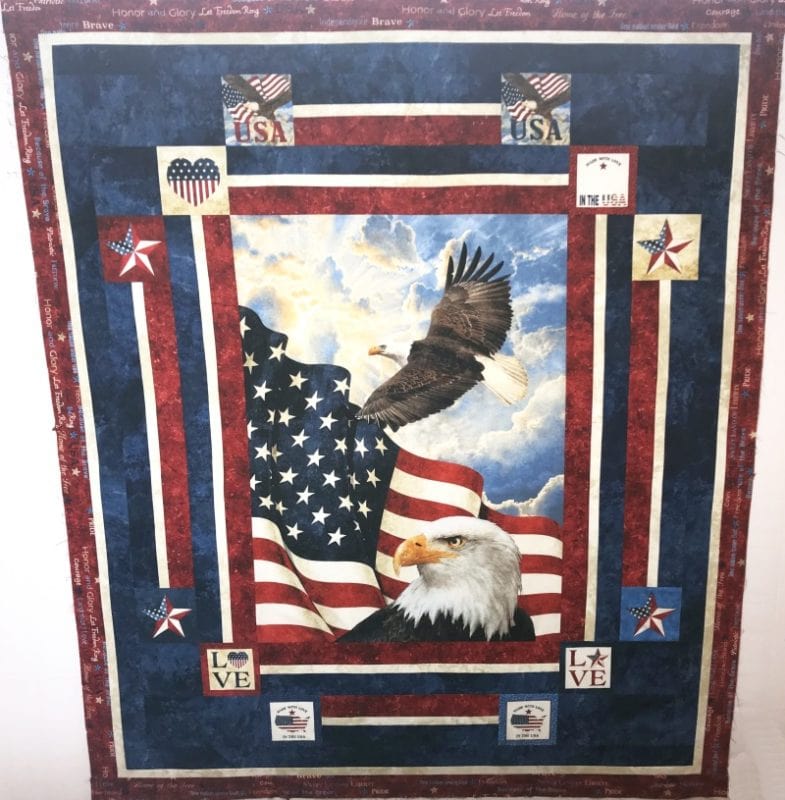
I was thrilled to be chosen by Northcott to design the With Love Quilt Pattern for the Stars and Stripes 10 – Stonehenge Anniversary Special Edition. This pattern arranges red, white, and blue stripe borders around a central panel. At the end of each border is a block that celebrates the USA! This pattern can be ordered on Etsy.
Fabric Requirements
Panel (Northcott # DP24280-44)
Fussy Cut Panel (Northcott # DP24283-12)
2/3 yard Red (Northcott # 3954-190)
2/3 yards White Background (Northcott # 3937-192)
2-2/3 yards Blue (includes binding) (Northcott # 3937-193)
1 yard Outer Border (Northcott # 24311-24)
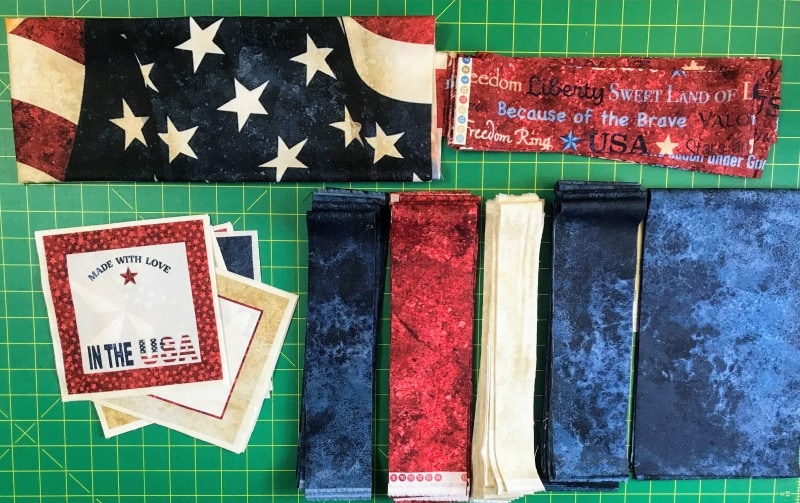
Before beginning this or any other project, wash and press your fabric. If you like the behavior of crisp fabric as you work with it, try a little spray sizing when you iron it. Take the time to clean your machine, put in a new needle, and fill a few bobbins.
Pressing means just holding the iron over a spot for a moment or two. Don’t drag the iron back and forth as you normally do when ironing. That might distort your seams.
Read over this pattern before you start to sew. If you are not making the Northcott
project, take the time to cross off the names of the colors used in this pattern and write in yours. This pattern assumes a perfect 1/4″ seam. WOF means Width of Fabric.
Cut Your Strips
This pattern uses a lot of long strips! I recommend a Stripology ruler and a new rotary cutter blade. Neither one is inexpensive but you will thank every star in this quilt that you made the investment once you get done cutting all these strips.
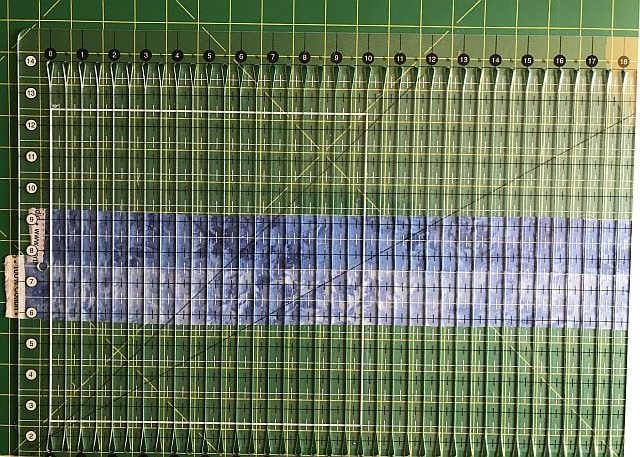
If you are not using Northcott # 24311-24 for the Outer Border and have chosen a directional alternative, you may want to cut the border to the width of the fabric repeat. This is YOUR quilt. If you want a wider border, go for it. I still suggest cutting the borders along the fabric repeat. That will help you match up the design when you sew the strips together.
The directions in this pattern suggest mitering the joins of long strips to disguise the seams. If you are working with directional fabric, consider a straight seam to match the design. You will probably have to sacrifice some fabric to get the repeat to match perfectly. That is what we did when we made this sample quilt, made before the fabric arrived.
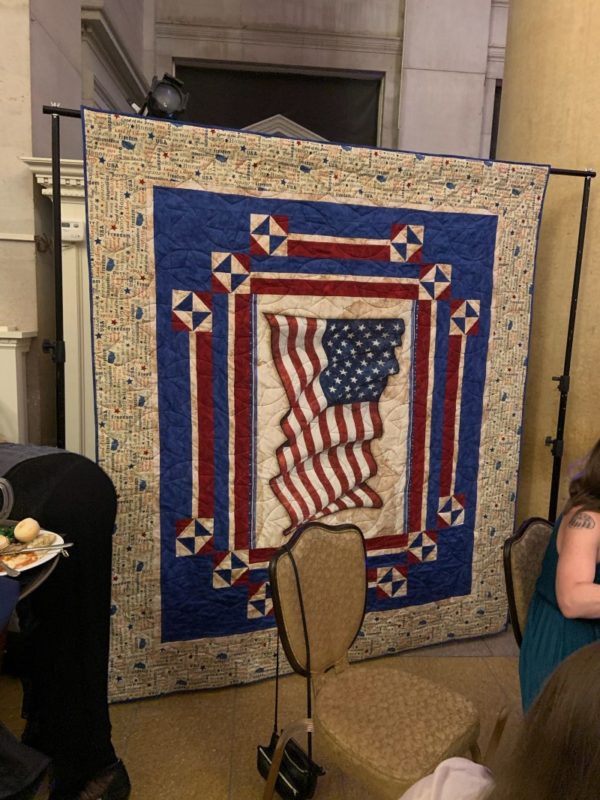
Preparing the Panel
You will also need to trim your panel to 30-1/2″ x 42-1/2″. Again, if you are not using Northcott # DP24280-44, you may need to alter the pattern. The center panel in this pattern needs to be 30-1/2″ wide and 42-1/2″ long. If your panel does not match this exactly, you will have to cut it down if it is too large or add a coping strip if it is too small. A coping strip is a strip of fabric that is added to the block or panel to make it larger.
Coping strips would only be used if your panel was less than 30-1/2″ wide or 42-1/2″ long. For example, if your panel is 24″ wide, you would need to add a coping strip wide enough to bring the width out to 30-1/2″. To find the center so you can trim it properly, fold your new panel in quarters and press both centers. That will help you center the panel as you trim it to 30-1/2″ × 42-1/2″.
Here are some quilts we made with coping strips when we were testing the pattern.
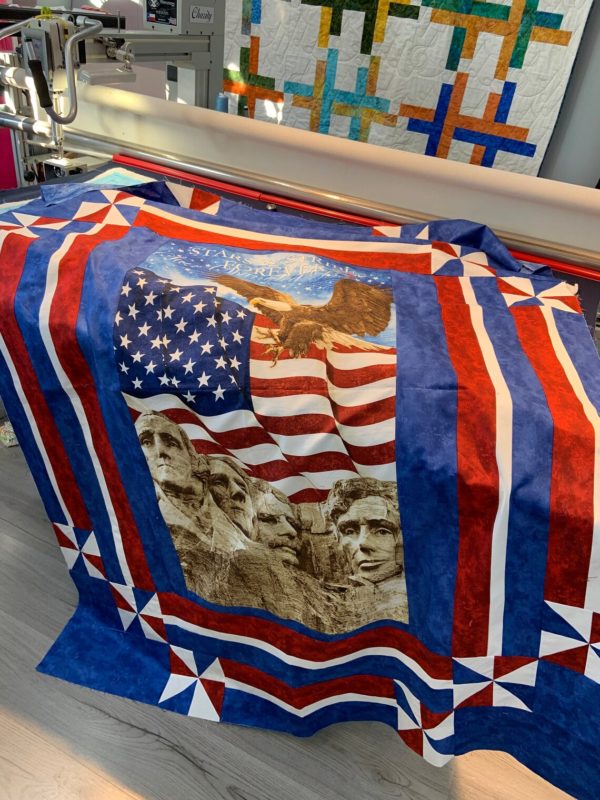
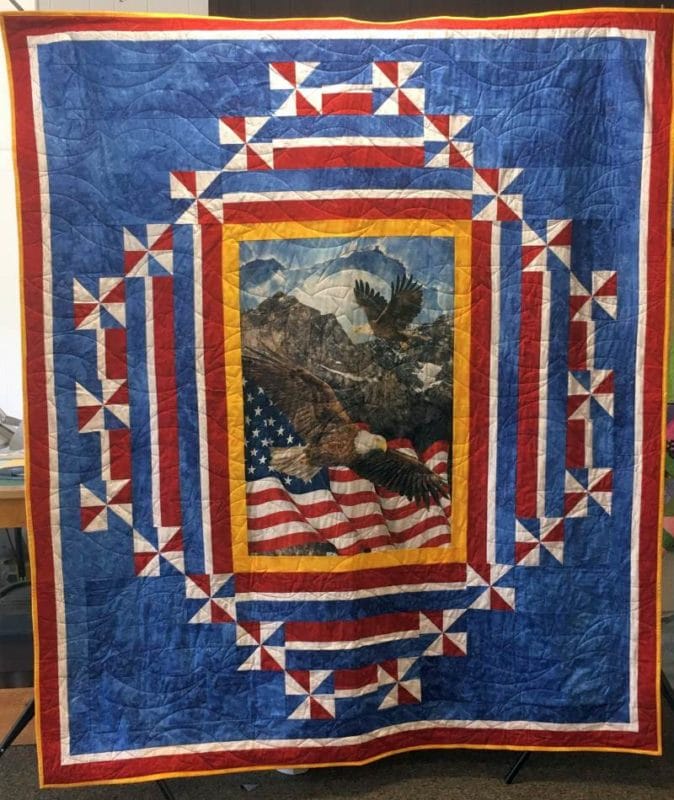
Preparing the Fussy-Cut blocks
The Northcott Panel # DP24283-12 has (12) blocks meant to be fussy cut. I am a big fan of Quilt-in-a-Day’s Fussy Cut Ruler Set. It gives you just the lines you need and nothing else to confuse you.
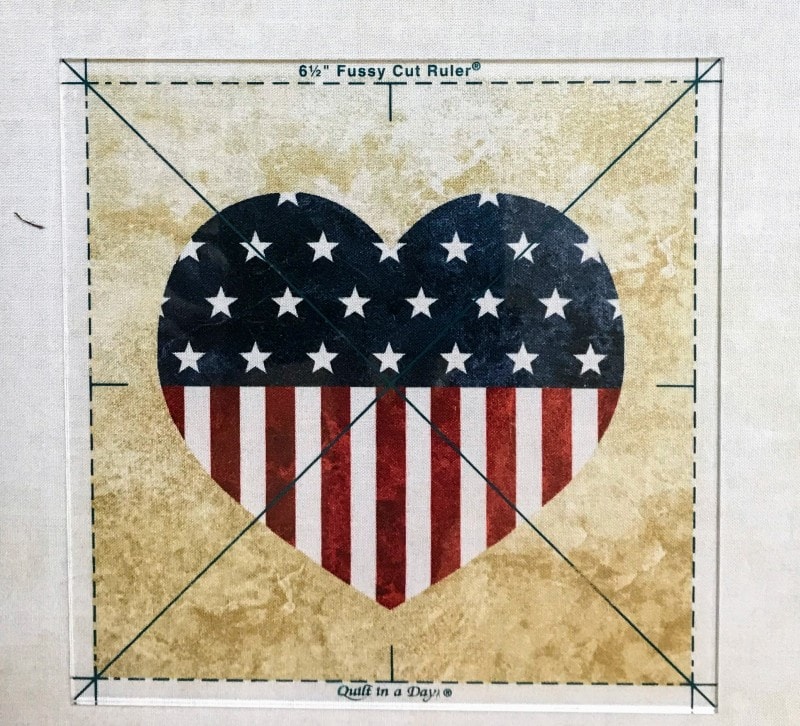
If you don’t have that panel, you can substitute Pinwheels. There are directions for making these in the pattern. We did this when we made our sample quilts, before the fabric arrived. You can see them in the pictures above. We used the Magic Eight method.
Sewing Strips
Now it’s time to make the three-part strips that make up the borders. The pattern has you sewing all the thinner strips together into a 6-1/2″ wide strip before cutting them the size of the borders.
When sewing long strips of fabric together, use a walking foot if you have one. The feed dog of your sewing machine will try to push the fabric on the bottom slightly faster than the fabric on the top. Using pins or a walking foot to keep two identically sized pieces of fabric together will help keep everything laying flat.
I chose to miter the joins of my long strips. It’s time consuming but I think it looks nicer. The pictures below were taken by one of the testers. The 1/4″ seam on the QIAD ruler is very useful!
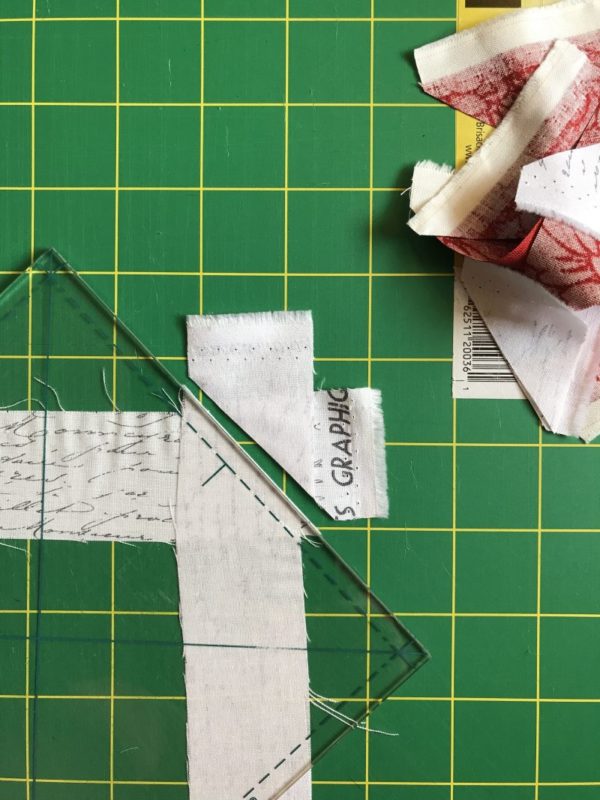
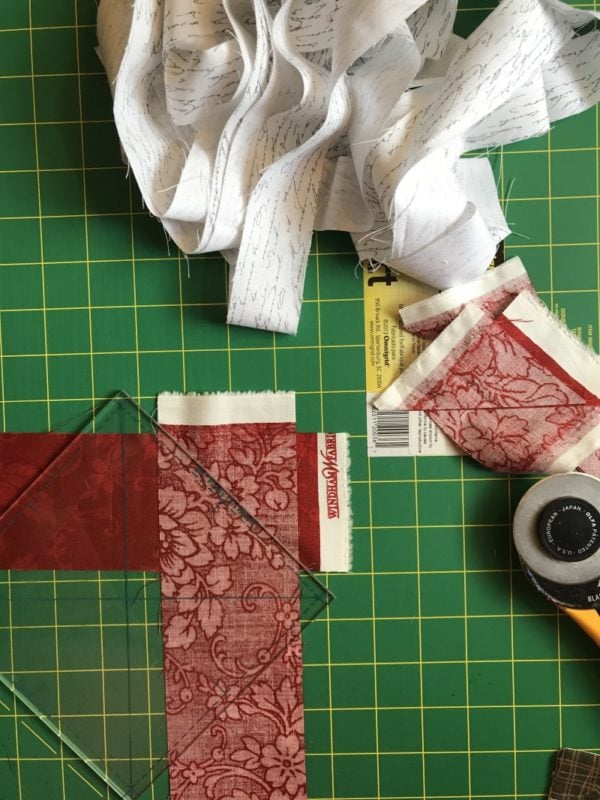
I pressed the seam open to keep the strip flat.
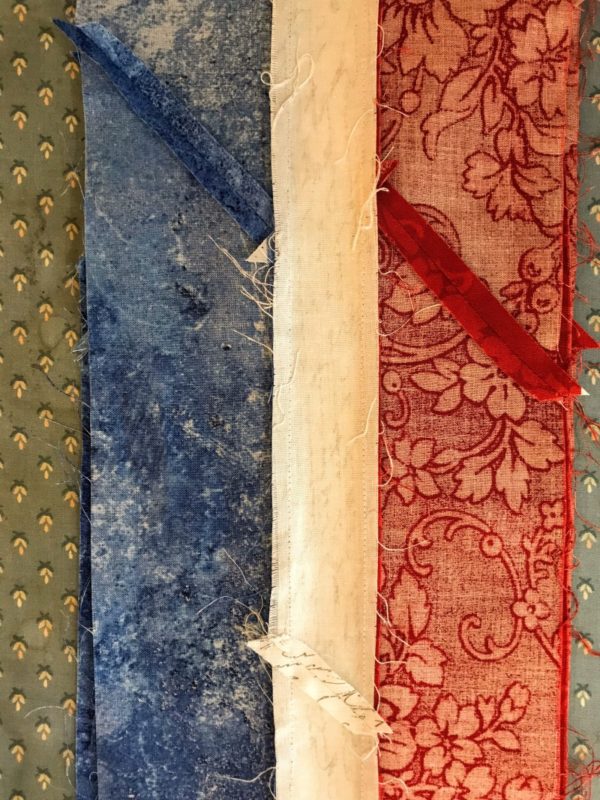
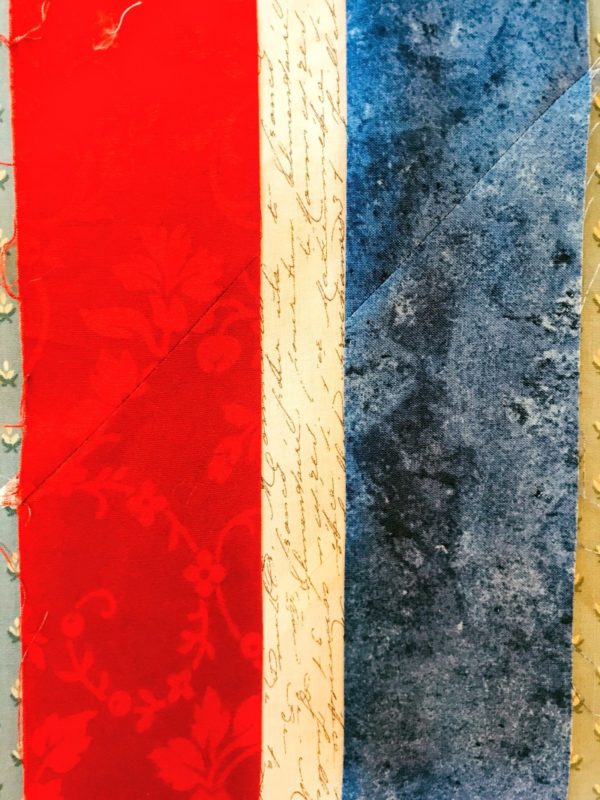
Each border that you make will have a fussy cut block at both ends. Pay special attention to the direction of the fussy cut blocks. The pattern will tell you, but it is easy to get something sideways.

When sewing borders on a quilt top, take the time to mark the center of each row, and pin it. Use a walking foot if you have one to keep the feed dogs from pulling the bottom row faster than the top row.
Pay close attention to the orientation of the strips. If you find yourself sewing two of the same color strip together, you have sewn one strip upside down. Because of the way you have pressed your seams, they should just nestle at the intersections. Press from the back so you can fix any accidentally twisted seams.
Here is the final layout before adding the outer border.
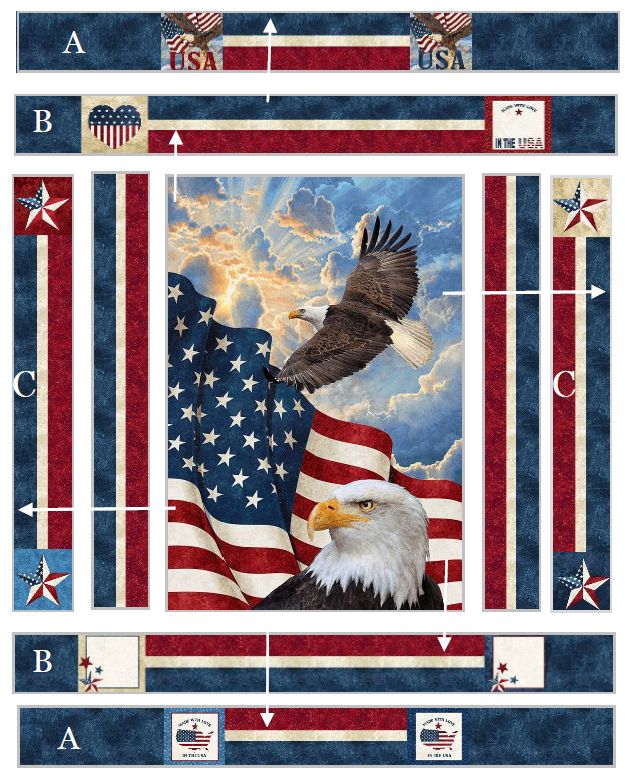
Now all you have to do is add the outer borders. Give your top one final pressing and you are done! Your finished top should be 66″ x 78″, which is the perfect size for a Quilt of Valor.
Don’t forget to add a label to your quilt. Preserve your place in history. Sign and date your quilts.


